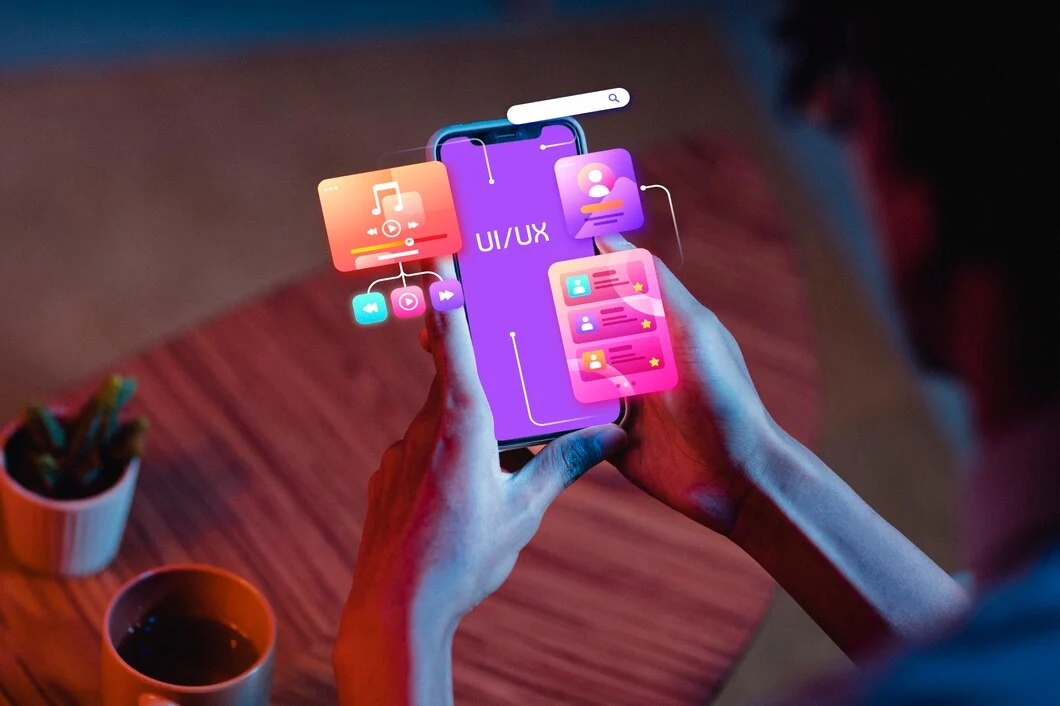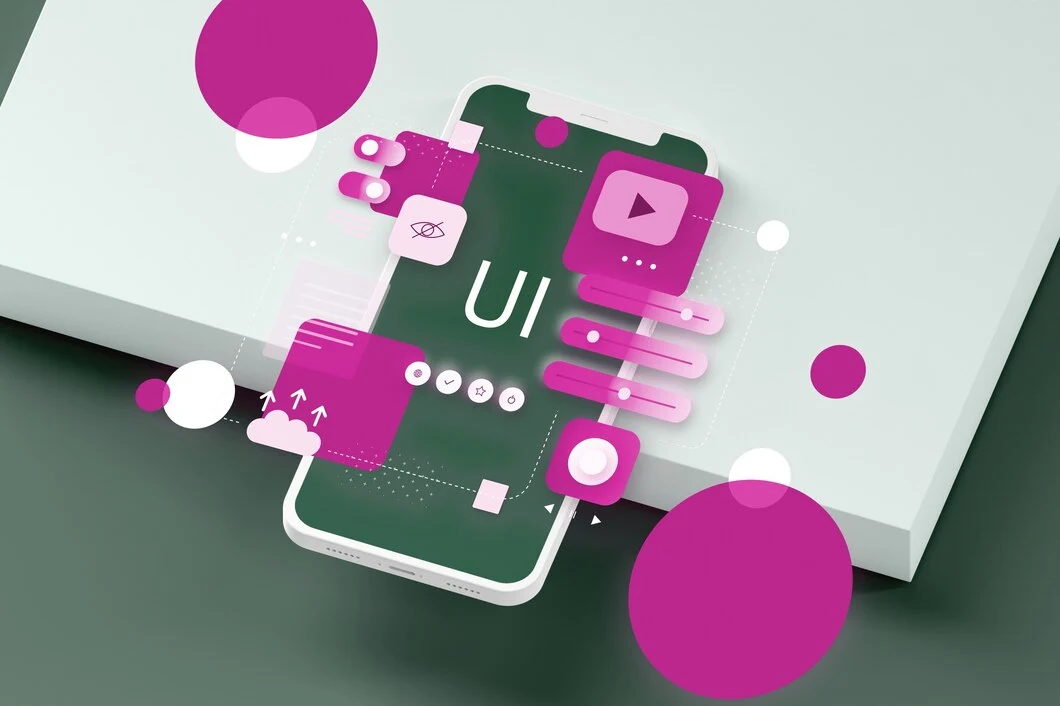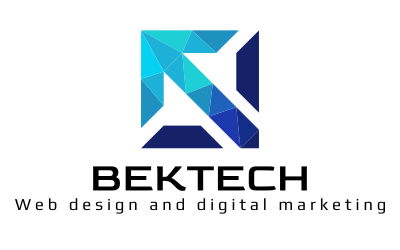In today’s digital age, user experience (UX) is a crucial aspect of any successful product or service. With the rise of artificial intelligence (AI), the field of UI design is rapidly evolving to incorporate this technology. In this article, we will explore the concept of AI UI design and how it is shaping the future of user experience.
What is AI UI Design?
AI UI design is the use of artificial intelligence to enhance the user experience of a product or service. This can include anything from chatbots and virtual assistants to personalized recommendations and predictive interfaces.
The goal of AI UI design is to create a more intuitive and efficient user experience by leveraging the power of AI.
AI acts as a powerful tool for UI designers, augmenting their capabilities in several ways:
- Personalization at Scale: AI can analyze user data and preferences to personalize the user interface for each individual. This could involve tailoring content recommendations, suggesting relevant features, or dynamically adjusting layouts based on user behavior.
- Smarter Search and Navigation: AI-powered search functions can understand natural language queries and provide more relevant results. Additionally, AI can personalize navigation menus and anticipate user needs, making it easier for users to find what they’re looking for.
- Predictive Interfaces: AI can analyze user behavior patterns to predict user needs and proactively present relevant information or actions. This can significantly improve user efficiency and streamline workflows within an interface.
- Enhanced Accessibility: AI can be used to create more inclusive user experiences by personalizing interfaces for users with disabilities. For example, AI can generate alternative text descriptions for images or recommend assistive technologies.
- Chatbots and Virtual Assistants: AI chatbots and virtual assistants can provide real-time support and guidance within the user interface, offering a more interactive and personalized user experience.
Benefits of AI UI Design

One of the main benefits of AI UI design is its ability to personalize the user experience. By analyzing user data and behavior, AI can create a customized experience for each individual user. This not only improves the overall user experience but also increases customer satisfaction and loyalty.
Another advantage of AI UI design is its ability to automate tasks and streamline processes. This can save users time and effort, making their experience more efficient and enjoyable. For example, AI-powered chatbots can handle customer inquiries and support, freeing up human employees to focus on more complex tasks.
The Role of AI in UI Development
AI is also playing a significant role in the development of UI design. With the help of AI, designers can create more intuitive and user-friendly interfaces. AI algorithms can analyze user behavior and preferences to inform design decisions, resulting in a more user-centric approach.
AI is also being used to automate the design process itself. With the use of generative design, AI can create multiple design options based on a set of parameters, allowing designers to explore a wider range of possibilities and choose the best option for their product.
Challenges of AI UI Design
While AI UI design offers many benefits, it also presents some challenges. One of the main concerns is the potential for bias in AI algorithms. If not properly trained and tested, AI can perpetuate existing biases and discrimination, leading to a negative user experience for certain groups of people.
Another challenge is the ethical implications of AI UI design. As AI becomes more integrated into our daily lives, it is important to consider the ethical implications of its use. This includes issues such as privacy, security, and transparency.
Integrating AI Tools into Your Design Workflow
In 2024, web design enters a new era of intelligent assistance. Imagine ditching repetitive tasks and unlocking a universe of creative possibilities.
AI UI design isn’t just a buzzword; it’s a toolbox brimming with intelligent automation, data-driven insights, and the power to personalize user experiences like never before. Here’s how you can leverage AI in your UI/UX workflow:
AI-powered Checklist for Next-Level Web Design:
- Effortless Mockup Generation: Leverage AI tools to generate initial wireframes and mockups based on your project goals and target audience.
- Smart User Research: Analyze user behavior data with AI to identify pain points and inform design decisions for optimal user journeys.
- Personalized Interface Magic: Craft dynamic interfaces that adapt to user preferences and browsing history, creating a truly unique experience for each visitor
- Accessibility on Autopilot: Utilize AI to identify and address potential accessibility issues early in the design process, ensuring your website is inclusive for all.
- A/B Testing Efficiency: Run A/B tests faster and gain deeper insights with AI assistance, optimizing your design for maximum user engagement and conversion.
By integrating AI tools and following this checklist, you can streamline processes, craft hyper-targeted interfaces, and elevate your designs to an unprecedented level of user-centric brilliance.
Understanding AI Algorithms for UI Design
Gone are the days of solely relying on intuition for user experience (UX). AI algorithms are revolutionizing UI design by providing:
- Data-Driven Insights: AI analyzes user behavior data (clicks, scrolls, etc.) to identify user needs and preferences. This data informs design decisions, leading to more intuitive and user-friendly interfaces.
- Automation and Efficiency: Repetitive tasks like generating variations of layouts or testing color palettes can be automated with AI, freeing up designers’ time for creative problem-solving.
- Personalization Power: AI personalizes user experiences by tailoring interfaces based on individual user data. Imagine a website that adjusts its layout or content based on browsing history or user demographics.
Types of AI Algorithms for UI Design:
While the specific algorithms used can vary, here are some common categories:
- Machine Learning (ML): ML algorithms “learn” from data sets to identify patterns and make predictions. In UI design, this could involve predicting user behavior or recommending optimal layouts based on historical data.
- Natural Language Processing (NLP): NLP helps computers understand human language. In UI design, NLP might be used to analyze user feedback or conduct sentiment analysis to understand user satisfaction.
- Computer Vision: This technology allows computers to “see” and interpret visual data. In UI design, computer vision could analyze existing interfaces and suggest improvements or identify design trends.
Understanding Doesn’t Require Coding!
Don’t worry, you don’t need to be an AI programmer to leverage these tools. Many user-friendly AI design platforms are available, allowing designers to utilize AI’s power without writing code.
Benefits of Understanding AI Algorithms
By understanding the core concepts of AI algorithms, designers can:
- Choose the right AI tools: Knowing what each algorithm does helps designers select the best tool for their specific design goals.
- Interpret AI recommendations: AI tools offer suggestions, but designers should still make informed decisions based on their understanding of user needs and project goals.
- Stay ahead of the curve: As AI evolves, designers with a grasp of the underlying algorithms will be better positioned to adapt and utilize new design possibilities.
Can AI Replace UI/UX Designer?!
No, AI is unlikely to completely replace UI/UX designers in 2024 or the foreseeable future. Here’s why:
- Human-Centered Design: UI/UX design is fundamentally about understanding human needs, emotions, and behaviors. AI can analyze data and identify patterns, but it lacks the empathy and intuition crucial for creating truly user-centric experiences.
- Creative Vision: While AI can generate design variations, it still needs human input to define the overall design direction, brand identity, and user journey.
- Strategic Thinking: UI/UX design involves complex problem-solving and strategic decision-making. AI can automate tasks but can’t replicate the strategic thinking and critical analysis needed to craft optimal user experiences.
However, AI is transforming the UI/UX design landscape by: - Boosting Efficiency: AI automates repetitive tasks like wireframing and prototyping, freeing up designers for more creative endeavors.
- Data-Driven Insights: AI analyzes user data (clicks, heatmaps) to identify user behavior patterns. This data informs design decisions, leading to more intuitive interfaces.
- Personalization Potential: AI personalizes user experiences by tailoring interfaces based on individual user data. This enhances user engagement and satisfaction.
The Future: Collaboration, not Replacement
The future of UI/UX design lies in collaboration between humans and AI. Designers will leverage AI tools for automation and data analysis while focusing on their core strengths: creativity, empathy, and strategic thinking. This human-AI partnership will lead to the creation of even more innovative and user-friendly experiences.
How to use AI to generate UI design?
AI is making waves in UI design, offering exciting possibilities for streamlining workflows and generating initial concepts. Here’s how you can leverage AI to get started with your UI design:
Define Your Project Goals & Target Audience
Before diving into AI tools, clearly define your project goals (e.g., increase user engagement, streamline checkout process). Understanding your target audience (age, demographics, tech-savviness) is also crucial.
Choose an AI Design Platform
Several user-friendly platforms cater to AI-powered UI design. Popular options include:
- Uizard: This platform utilizes Autodesigner, an AI feature that generates UI mockups based on your project description and design style preferences.
- Adobe XD: While not solely AI-focused, Adobe XD integrates some AI features like “Content Recommender” that suggest relevant UI elements based on your design.
- Figma with Figma Jam AI: This combination allows generating flowcharts and basic layouts based on your text prompts within Figma Jam, a collaborative design workspace.
- Utilize AI for Initial Concepts: Instead of starting from scratch, use the chosen platform’s AI features to generate initial wireframes or mockups. Provide the AI with details like project goals, target audience, and desired design style (e.g., minimalist, playful).
Refine and Iterate: Remember, AI-generated concepts are a starting point, not a finished product. Refine the layouts, customize elements, and iterate based on your design expertise and user feedback.
Focus on User-Centricity: While AI can offer suggestions, the human touch remains vital. Don’t blindly accept AI recommendations. Always prioritize user needs and conduct user testing to ensure the final design is truly user-friendly and effective.
The Future of AI UI Design

As AI continues to advance, the future of AI UI design looks promising. With the ability to analyze vast amounts of data and learn from user behavior, AI will continue to improve the user experience and make it more personalized and efficient.
In the coming years, we can expect to see more AI-powered interfaces and interactions, as well as advancements in areas such as natural language processing and computer vision. As AI becomes more integrated into our daily lives, it will play an even bigger role in shaping the future of user experience.
In conclusion, AI UI design is revolutionizing the field of user experience. By leveraging the power of AI, designers can create more intuitive and personalized interfaces, leading to a more efficient and enjoyable user experience. As AI continues to advance, we can expect to see even more exciting developments in the world of UI design.
Does Figma have AI?
Yes, Figma offers some AI features through Figma Jam AI. It allows generating basic layouts and flowcharts based on your text prompts. However, Figma isn't solely AI-focused, and most design work still requires human input and expertise.
What AI tool replaces Figma?
There currently isn't an AI tool that completely replaces Figma. While AI design tools like Uizard offer UI generation features, they often lack Figma's robust design and collaboration functionalities. Figma remains a powerful design tool, and AI is more likely to complement Figma by automating tasks or generating initial concepts within the design workflow.
what is the The ROI of AI-Powered UI Design?
ROI of AI UI Design:
Increased Efficiency: AI automates tasks, freeing designers for higher-level work (potentially boosting project output).
Improved User Experience: Data insights from AI can lead to more intuitive and user-friendly interfaces.
Enhanced Personalization: AI personalizes interfaces, potentially increasing user engagement and conversions.
But remember: Upfront costs for AI tools exist, and success depends on choosing the right tool and integrating it effectively.




